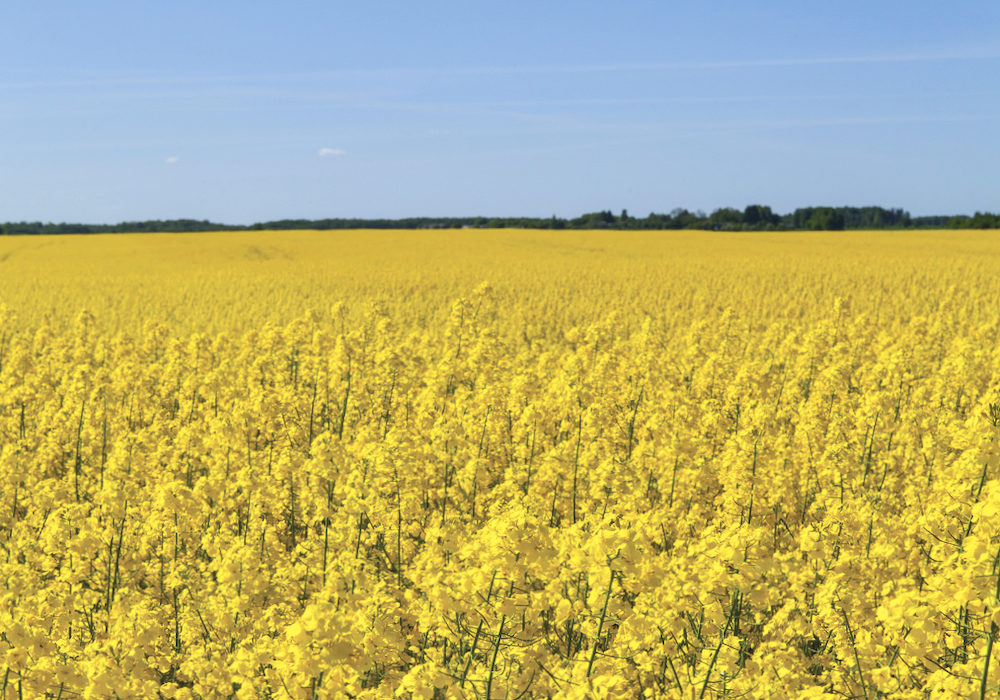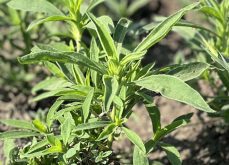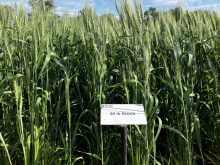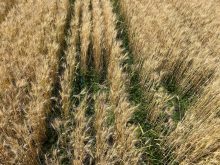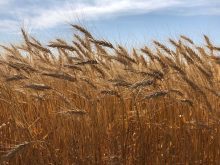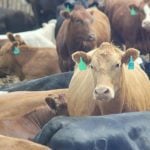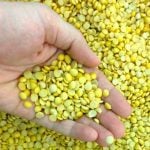We often hear about the need for boron (B) fertilizer to optimize canola production and occasionally for other crops. However, boron is not widely used as a fertilizer in Western Canada. In the fall of 2021, Fertilizer Canada surveyed western Canadian wheat and canola growers to determine fertilizer use. This survey found about 8.6 per cent of canola growers and 3.3 per cent of wheat growers used boron fertilizer in 2021 but the rates applied were not reported.
Forty-two, 16, 31 and 22 per cent of canola growers used soil tests, tissue tests, retailer advice or crop advisor recommendations, respectively, to determine the need for boron fertilizer applications to canola. Forty-four, 17, 28 and 33 per cent of wheat growers used soil tests, tissue tests, retailer advice or crop advisor recommendations, respectively, to determine the need for boron fertilizer application to wheat.
Farmers and agronomists are asking how to determine when boron fertilizer is really needed for economic yield increases? This is not an easy question to answer.
Read Also
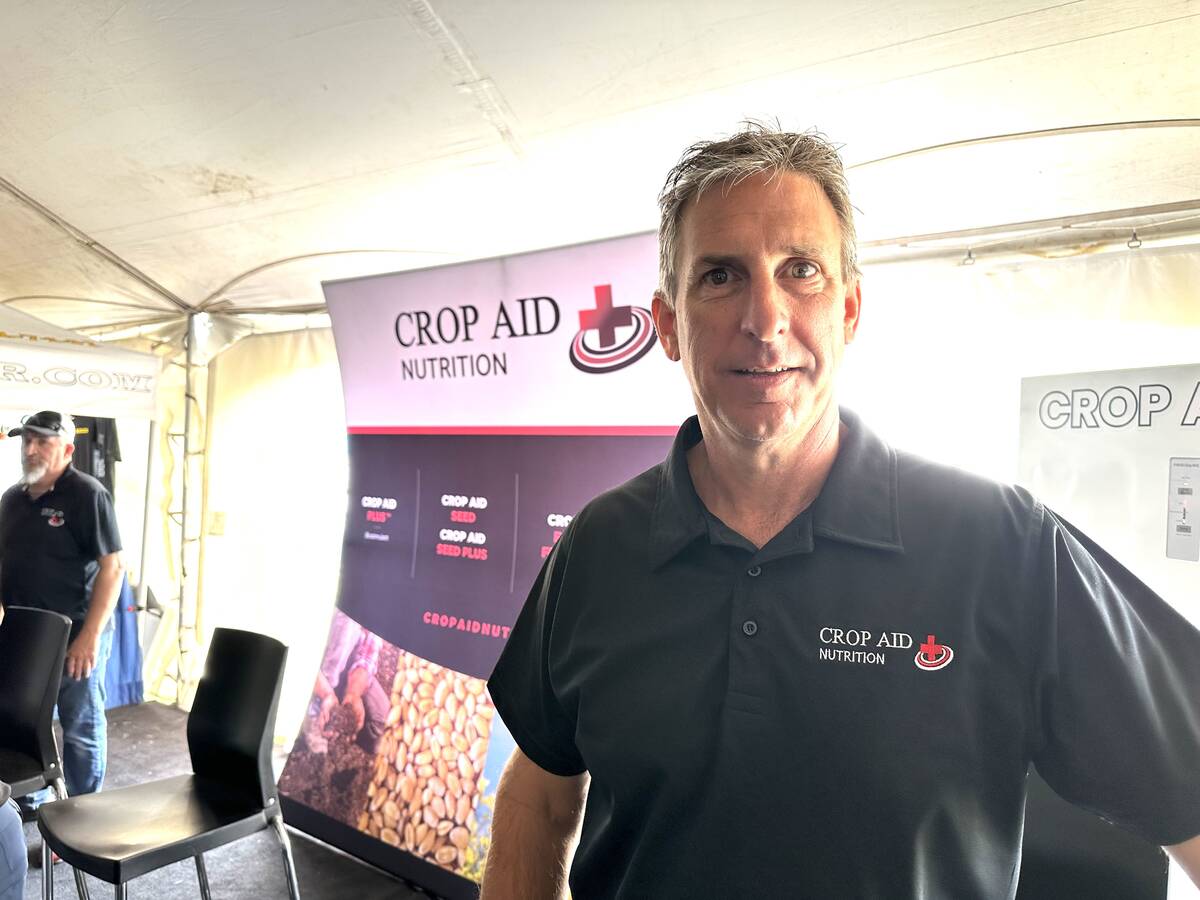
New soil treatment targets saline patches in fields
Crop Aid SS is a Saskatchewan-made spray that’s intended to help farmers manage saline soils by leaching salts away from the root zone.
It’s important to note that boron is an essential micronutrient required for crop growth. It is referred to as a micronutrient as it is required in relatively small amounts. For example, a 40-bushel-per-acre canola crop will take up about 0.3 pounds per acre (lb/ac) of boron, with about 0.1 lb/ac of boron in the seed and about 0.2 lb/ac in the straw.
[RELATED] VIDEO: Manitoba Agriculture launches fertilizer efficiency calculator
For an 80-bushel-per-acre wheat crop, about 0.25 lb/ac of boron is taken up with about 0.08 lb/ac of boron in the seed and about 0.17 lb/ac in the straw. These are approximate numbers. It is important to remember that although boron is essential for growth, the amount of boron needed by crops is very small.
Canola and alfalfa are two crops grown in the Prairies with a higher sensitivity to boron deficiency. Wheat, barley, corn, potato, pea and most grasses have a relatively low sensitivity to boron deficiency.
Decomposing soil organic matter is an importance source of boron for crops. Plant-available boron in soil primarily occurs as boric acid (H3BO3), which is a neutral molecule. As a neutral molecule without a positive or negative charge, it does not attach to clay particles or soil organic matter.
As a result, it is more mobile in soil and can be moved downward in the soil profile with excess precipitation or irrigation. Potential boron deficiency tends to be greater on coarse-textured soils with lower soil organic matter levels and higher rainfall conditions.
A minor deficiency of boron may result in slightly reduced crop yields. But often there will be few, if any, visible boron deficiency symptoms. With more severe boron deficiency, symptoms may be observed on new plant growth, including new leaves, flower buds or tips of stems. This is because plants are unable to mobilize boron and translocate it from older to newer plant tissue, so boron deficiency symptoms occur on newer plant growth tissue.
Literature review
To develop a good sense of boron requirements in Western Canada, a review of the scientific literature on boron research is useful.
The results of a large study led by fertilizer expert Rigas Karamanos to examine canola response to boron in Western Canada were published in 2003. Using the hot water extractable boron soil test method, sites were selected that were either deficient or marginal in soil boron. A series of 22 trials with seven separate experiments were conducted.
Researchers examined the effects of placement method (broadcast and incorporation and seed placement) and rates, as well as foliar application of common granular and liquid boron products on seed yield, plant tissue levels of boron in young canola plants and oil content of the canola seed.
They found no significant canola yield increase in any of the experiments. One conclusion of the study was the hot water extractable soil test for boron was not an effective diagnostic tool for determining boron status in the soil.
Also published in 2003, a study led by Sukhdev Malhi examined canola yield, seed quality and diseases related to different rates, times and methods of boron fertilization on some sandy soils in northeastern Saskatchewan expected to be boron deficient based on the hot water extractable boron soil test.
The study suggested canola rarely responded to boron fertilization in field conditions on soils suspected to be deficient based on a soil test.
More studies published in 2003 led by Karamanos and Malhi found significant canola yield responses to boron fertilizer were rare in Western Canada. Both groups concluded general applications of boron fertilizer are not warranted in canola. This refuted the idea that in Western Canada, high-yielding hybrid canola was being limited by soil-available boron.
A more recent study published in 2016 by Neil Harker and Murray Hartman conducted trials at 14 sites in Alberta and Saskatchewan in 2013 and 2014 (the study can be found at https://tinyurl.com/bddtej56). Of the 12 sites where boron was applied on canola at the four- to six-leaf stage, one site (at Beaverlodge, Alta.) had a 14 per cent yield increase.
The other 11 sites did not respond to boron. The authors noted the Beaverlodge site had unusually low yields compared with other sites within the study. Of the 14 sites where boron was applied at the flowering stage, 12 sites did not respond to added boron, while two sites showed a significant response — yields at Beaverlodge increased by 13 per cent and at Lethbridge, Alta., there was a 14 per cent reduction in yields when boron was applied.
Micronutrient trials in Alberta
In the late 1980s and 1990s, Alberta Agriculture conducted more than 200 micronutrient trials, including application of boron on canola, wheat, barley and other crops, across southern Alberta under dryland conditions on Brown, Dark Brown and Thin Black soils as well as numerous irrigated sites.
For winter wheat, spring wheat, barley and canola, of the more than 200 trials, not one site significantly responded to added boron fertilizer under dryland or irrigated conditions.
Some sites had soil test boron as low as 0.1 parts per million and no sites responded to added boron fertilizer. Some canola, pea and bean sites and one dryland winter wheat site did have a significant yield reduction in the range of 10 per cent or more when boron fertilizer was banded at a rate of two pounds of boron per acre. It is important to note, even at low application levels, boron fertilizer can have a toxic effect on a crop, particularly if banded.
Some of our conclusions at the time included the following:
- Brown, Dark Brown and Thin Black dryland and irrigated soils in southern Alberta may test as low as 0.1 parts per million for hot water extractable boron, yet crops did not respond to added boron fertilizer.
- Crops were able to extract the needed amount of boron from the soil even though levels of hot water extractable boron appeared low.
- The hot water extractable soil test for boron was a poor indicator to diagnose boron deficiency in soil and to predict the need for boron fertilizer. This was corroborated by results of the 2003 study led by Karamanos.
- Yields of winter wheat, pea, bean and canola declined at some research sites by 10 per cent or more due to boron toxicity. Unwarranted application of boron fertilizer can increase the risk of toxicity to a crop resulting in yield reduction.
- Continued research and testing are required to identify when economic yield increases to various crops might result from boron fertilizer.
The Canola Council of Canada boron research trials conducted from 2013-15 were well designed. These trials found no consistent yield benefits from boron treatments, including plots with very high yield results. Little, if any, economic benefit from boron fertilizer was found in any of these trials.
Published in 2020, Noabur Rahman and Jeff Schoenau conducted a polyhouse (similar to a greenhouse but conditions are more like those found in the field) study to evaluate the relative effectiveness of different micronutrient fertilizers on wheat, pea and canola on five contrasting Prairie soils.
For canola, soil placement of boric acid was effective in correcting the deficiency problem in only one soil type, but two foliar applications on the same soil type were ineffective. Researchers questioned the accuracy of the hot water extractable test for boron and speculated on possible reasons for the inaccuracy.
What does this mean?
Research studies in Western Canada have shown general applications of boron fertilizer are not warranted to optimize canola yields or quality. Researchers have noted the hot water extractable soil test used to identify boron-deficient soils was not an effective diagnostic tool to predict boron deficiencies.
It’s important to keep in perspective boron and other micronutrient fertilizer requirements. Overpromotion of micronutrients has occurred in the past and continues to be a concern. With the high cost of fertilizers, farmers simply cannot afford to apply fertilizers that do not economically increase crop yields or quality.
Farmers and agronomists concerned about boron deficiencies are encouraged to investigate boron requirements thoroughly. Clearly, soil testing alone has been shown to have limited value, but tissue testing has shown greater promise. If crop and field conditions indicate a potential concern, start by applying boron fertilizer in replicated test strips in a field rather than fertilizing an entire field to assess the potential benefits.
Be sure to visually observe the test strips, take tissue samples, check for deficiency symptoms and carefully measure yield in each of the replicated test strips with the use of a weigh wagon or grain cart with scales.
If soil types vary across farmland, conduct replicated trials in multiple fields for several years. On-farm replicated trials will help quantify the potential value of boron applications.
There is no question that boron and other micronutrients will gradually decline in soils over time as cropping continues. However, at present, research studies in Western Canada have suggested most Prairie soils seem to be reasonably well supplied with boron.


